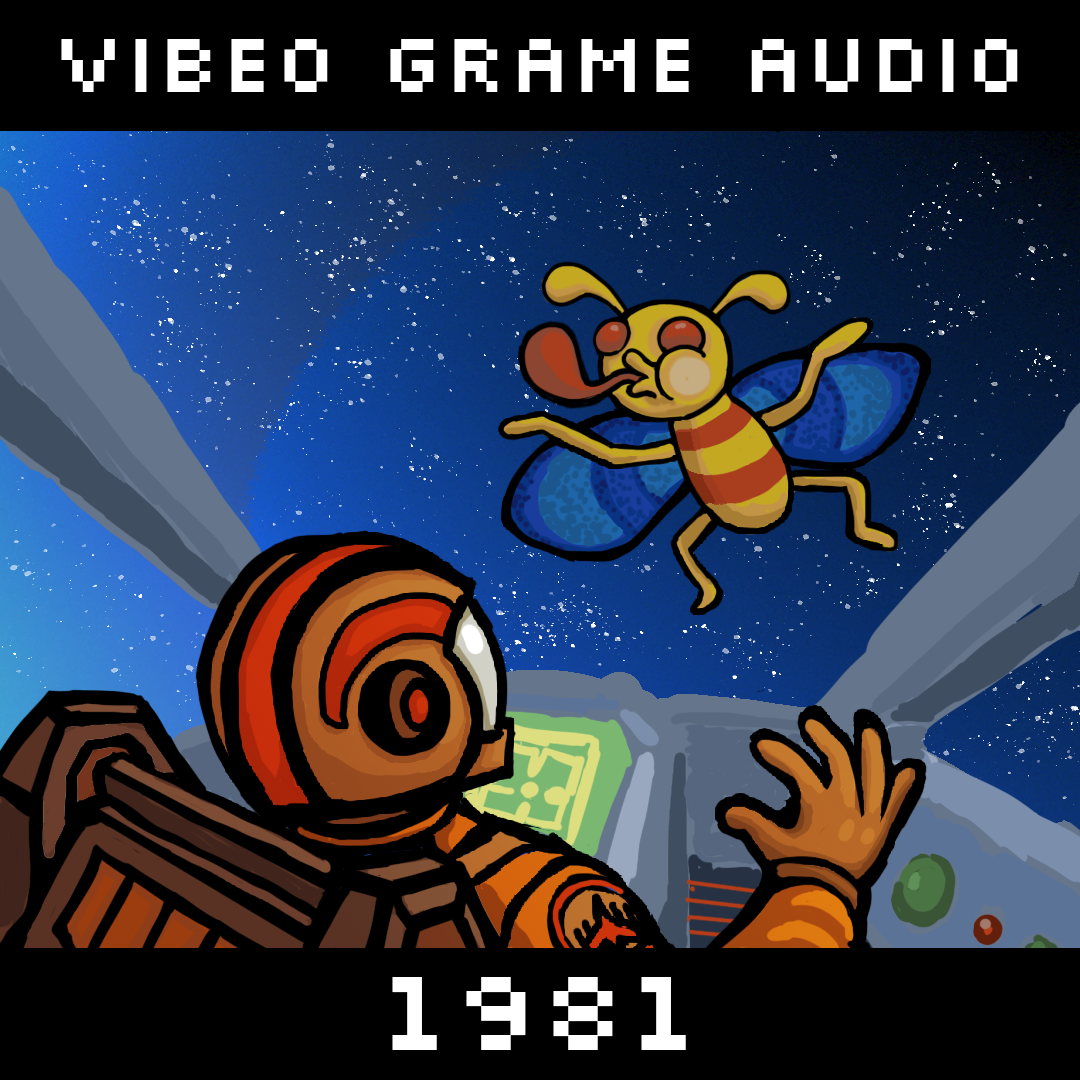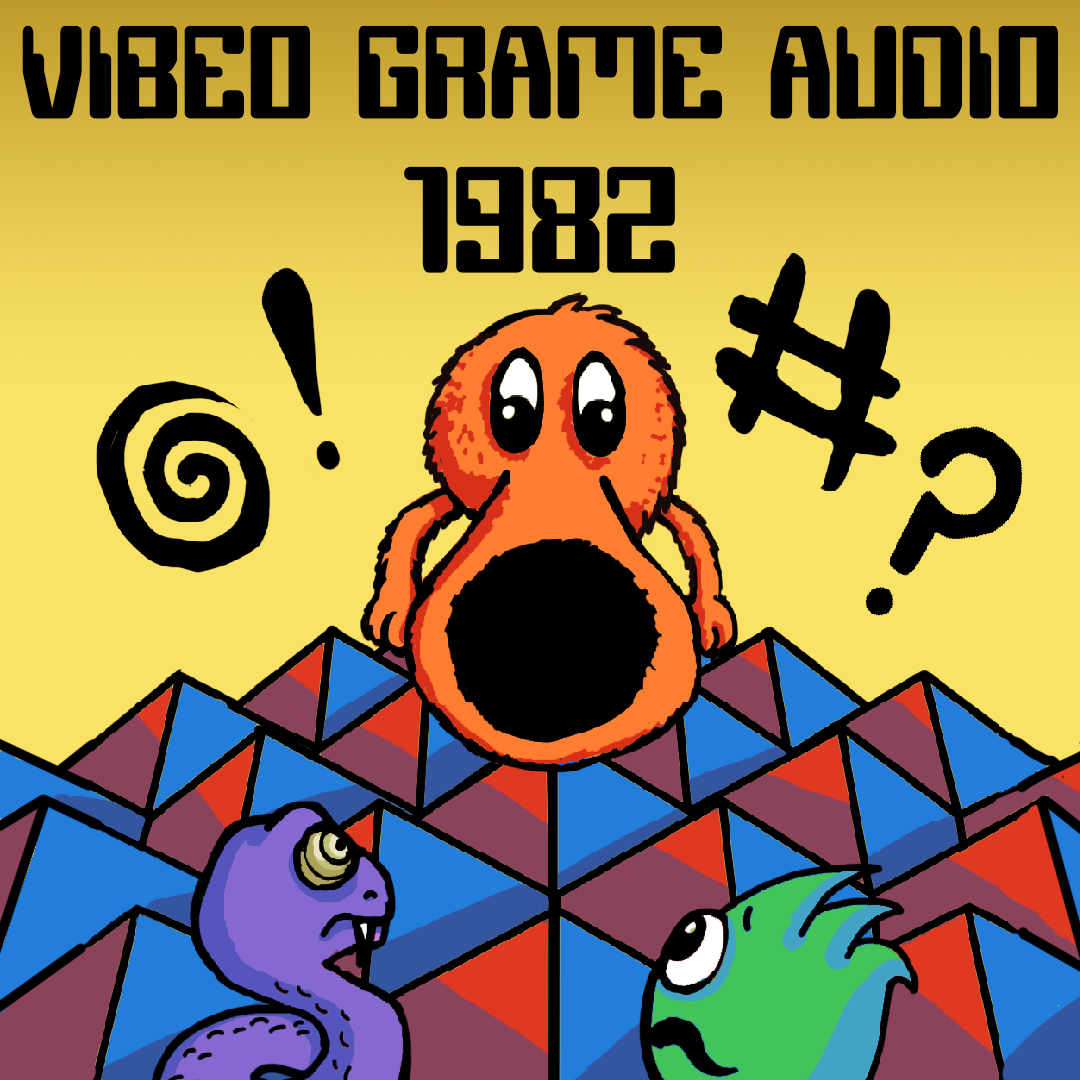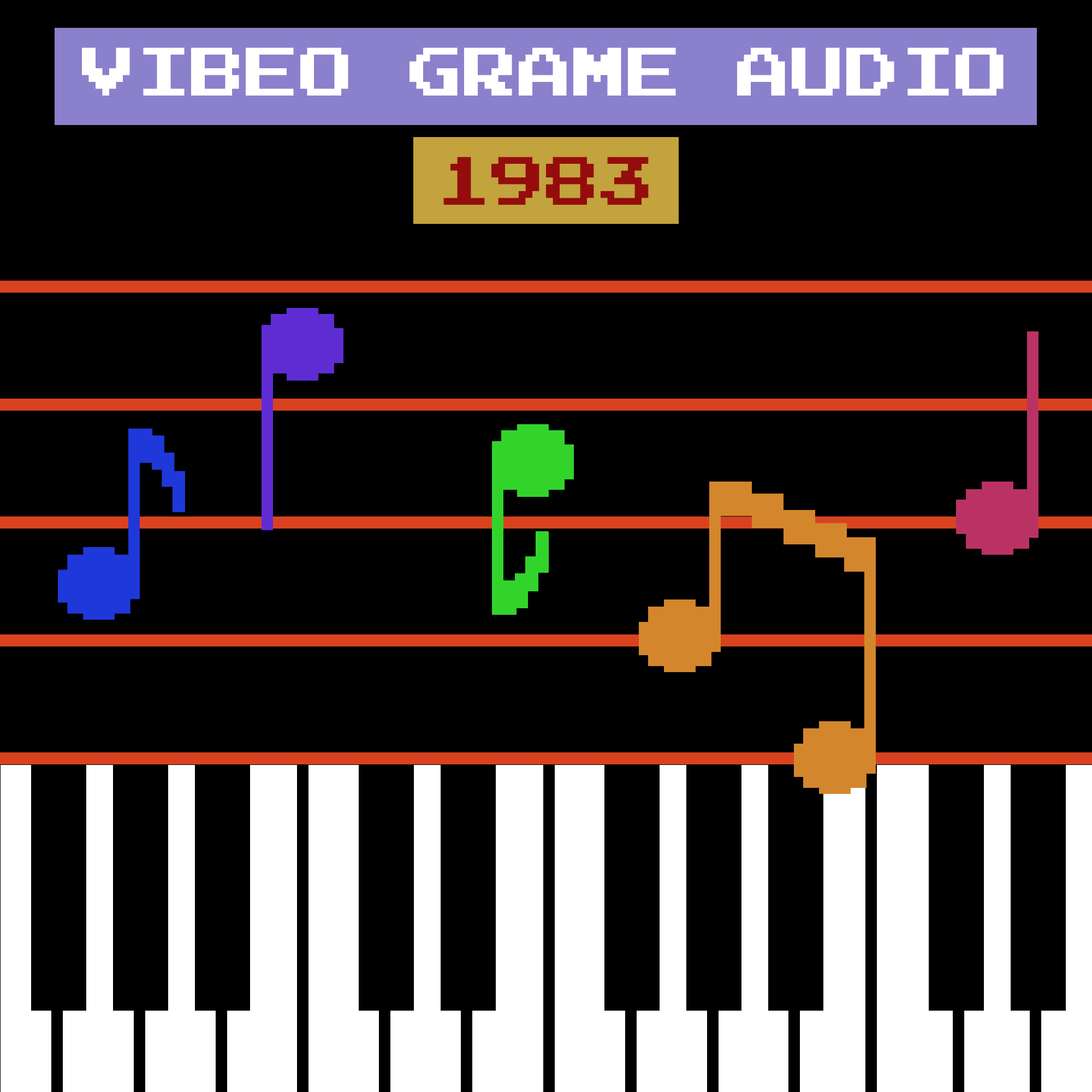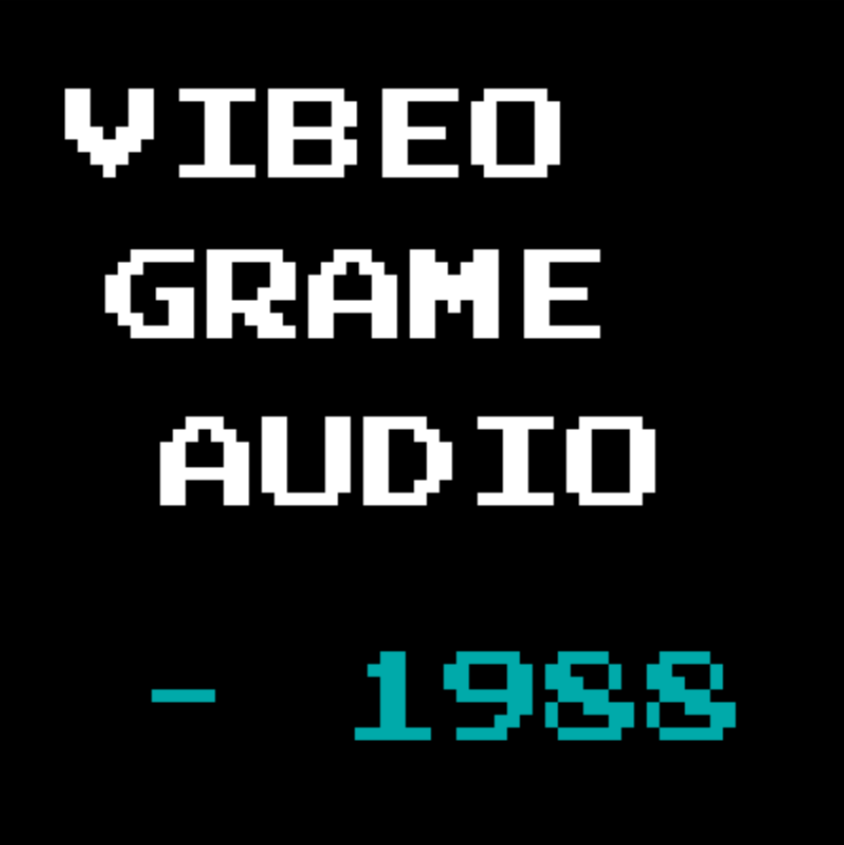While sound cards are not technically new to 1988, this is the first year for any notable FM Synthesis and MIDI on PC. Previous lists mentioned the Mockingboard, which might have been the original sound card, but that was exclusive to Apple II machines and also wasn’t FM synthesis. But then in 1987 the first major sound cards for everyone were released: the AdLib and the Roland MT-32.
Here’s the demo for the AdLib sound card
And here’s the demo for the Roland MT-32
General consensus seems to be that the Roland was the superior of the two. My evidence is: just listen to the two demos. But both sound cards signaled a monumental leap forward in PC audio. The vast majority of home computers pre-1988 had no audio aside from a “beeper,” which could produce only one tone at a time and was mostly used for short sound effects. Those computers which did have audio were in line with second and (if you were lucky) third-gen consoles, having a very small set of sound channels that could only play simple waveforms. Now with AdLib, Roland, and the many sound cards that would follow, PCs could take advantage of advanced FM Synthesis and a larger number of MIDI channels (usually 16) to produce higher quality sound and music. This did mean, though, that every game needed approximately one billion versions of the soundtrack to accommodate all the possible sound cards and systems.
Unfortunately, it would take a few years before the use of these sound cards became commonplace. Though introduced in the previous year of 1987, the AdLib and Roland MT-32 only feature in major releases starting on this list. We’ll see more of them in the coming years... until, of course, the whole system becomes obsolete with the new millennium. Here’s to the inexorable march of time!
#10: Phantasy Star
Composer: Tokuhiko Uwabo
Platform: Console (Sega Master System)
According to many who read Wikipedia, there were three major franchises which launched the JRPG. Two of those, Dragon Quest and Final Fantasy, have already been featured on my lists. Not only were those two instrumental in developing the genre but they also established the conventions of JRPG soundtracks. Phantasy Star, developed for the Sega Master System and not for Nintendo, was the third of these major franchises. And though it certainly did a lot for the genre generally, Phantasy Star’s music never got put on the same pedestal as the music written by Sugiyama or Uematsu.
That’s because it’s Bo again. Last time we heard Tokuhiko Uwabo, it was for his work on Alex Kidd in Miracle World, which oscillated between inventive and bafflingly amateur every thirty seconds. Phantasy Star is more of the same. For every fun track like “Shop” or “Title,” there is a “Tower,” a track which isn’t bad so much as it seems hollow. I’m not sure how else to describe it. With a Bo soundtrack, there are all the pieces to build the skyscraper, but they just haven’t been put together, so to speak.
As always, it’s unreasonable to expect you to watch the entire playthrough of this game just to prove to yourself the music belongs on this list. But if you want to see how the gameplay and audio interact, your only options are to watch it or to go get the game yourself. You can also listen to the soundtrack on its own, which will probably be more enjoyable.
#9: Altered Beast
Composer: Tohru Nakabayashi, arranged by Kazuhiko Nagai
Platform: Arcades, followed by Sega Genesis, then everything else
There is a reason that Sega dominated the arcades. Games like Altered Beast are that reason. Yes, eventually this game moved to consoles, most famously on the Mega Drive (known here in the West as the Sega Genesis). But it started in the arcade halls, so I’m calling it an arcade game.
Personally, the soundtrack itself is not my favorite. It’s fine, there’s some fun stuff going on, but I’m mostly drawn to the sound effects and voice synthesis. Listen to the opening track’s “Rise From Your Grave” and tell me that’s not the best recording of speech you’ve heard out of a video game up through this year. We’re not to the point of truly realistic sound effects yet, but this is a huge step up from the bleeps and bloops of the early 80s.
#8: Ultima V: Warriors of Destiny
Composer: Ken Arnold
Platform: PC
Previous Ultima games topped the lists, but now Ultima V is sitting close to the bottom. Why? For one thing, there are more games per year with good soundtracks, so there’s more competition, and better competition. But also, the things that made the earlier installments impressive are commonplace in 1988. It takes more than a soundtrack being large and cohesive to get to the top. Everyone has large and cohesive soundtracks now. Not to be negative or anything. I do like the music for Ultima V. It’s no Ultima IV, but it’s still miles better than most PC soundtracks of the day.
Eventually, Ultima V made use of the latest sound cards (the AdLib and Roland MT-32). However, it did not do so in its initial release for the Apple II. All the ports which used the advanced sound cards came after 1988, which kind of disqualifies them from being considered the best of 1988. The version I’m interested in here is the Mockingboard version, which is also the one I have linked below. I personally love Lord Blackthorn’s theme, which shows off just what you can do when you stack Mockingboard peripherals to get those extra sound channels. Ultima V also introduced players to now-iconic tracks “Ultima Theme” and “Stones,” both of which would reappear in later installments. These versions are a bit simplistic owing to the limitations of the Mockingboard but they’re still enjoyable to listen to.
#7: Final Fantasy II
Composer: Nobuo Uematsu
Platform: Console (NES)
Is it wrong to put an Uematsu soundtrack this low on the list? I promise I’m not trying to be contrarian for contrarian’s sake.
Final Fantasy II is a very experimental RPG for the time, and like a lot of experimental games, there are things that just don’t work out the way the designers intended. The most famous example is the battle system. Characters get stronger not by predetermined level growths but instead based on their actions taken in battle. For instance, using melee weapons increased a character’s strength, while casting spells increased magic power. Sounds good on paper. But in practice, it ended up difficult to understand, buggy, and prone to unintended consequences such as the optimal strategy literally being “friendly fire.”
The soundtrack is similarly experimental. Uematsu plays with some stranger melodic and harmonic ideas which sometimes achieve transcendent beauty and other times make me wish that I had been born deaf. I love the World Map track. It’s haunting and properly conveys the game’s melancoly. But all the dungeon music is irritating. Every second of it. It’s worth noting that in later versions of this game, on systems with better audio hardware, the dungeon music actually doesn’t sound that bad. So it’s really just the NES audio chip that should be blamed here and not necessarily Uematsu. But regardless of who’s fault it is, this is still a very hit-or-miss soundtrack.
#6: Blaster Master
Composer: Naoki Kodaka
Platform: Console (NES)
Blaster Master never had the notoriety of the big names like Mario and Zelda. If you know about it already, it’s probably because you were there when it was released and played it for yourself. For an NES game that isn’t one of the big franchises, Blaster Master is incredibly ambitious, being a Metroidvania that involves side-scrolling both in a tank and on foot, top-down sections, and underwater navigation, spread out over eight massive interconnected levels.
The soundtrack is also ambitious, though not as obviously so, taking the fullest advantage of the system’s capabilities to distinguish it from other games of the time. Use of the PCM sample channel is still rare at this point in the NES’ life cycle. But after Blaster Master, you’ll be hard pressed to find an amazing NES soundtrack that doesn’t use it. You can really hear the potency of the snare drum sound in the Forest Theme and the Castle Theme, for example. Typical white noise channels lacked that “oomph,” that heavy thumping that keeps the music driving. Soundtracks that only use white noise for the percussion often feel like there’s something missing or that the mix has no bass in it. But Blaster Master isn’t good merely because the PCM channel gets used. Kodaka, the game’s composer, also adds little touches to those samples - such as the fading echo on the snare drum in the Prologue Track.
Honestly it’s a delightful gem whose only real flaw is that there are five better ones this year.
#5: Ys II: Ancient Ys Vanished - The Final Chapter
Composer: Yuzo Koshiro, Mieko Ishikawa
Platform: PC (NEC-PC88)
I have gone back and forth on the placement of #4 and #5 on this list. They’re both really good and you could make the case I could flip them. However, I think they’re going to land in this order for a couple reasons.
In the last article, I marveled at the sheer audacity of Ys, which produced (a) balls-to-the-wall music for (b) 50+ minutes (c) on a medium that could barely handle audio at all in 1987. What an accomplishment! But that accomplishment has already been done. A magic trick is never quite as impressive the second time around. And while it does pack in nearly an hour of high-energy music, only 30 to 40 minutes of that soundtrack are really excellent. Nothing here is bad, don’t get me wrong, but there are definitely tracks that stand out as weaker than the rest. I’d rather have a 15 minute soundtrack with all bangers than have 30 good minutes on a 60 minute set, if you know what I mean.
Even so, there are some excellent tracks in here, and I recommend “Too Full With Love,” “May I Help You,” “Cavern of Rasteenie,” “Subterranean Canal,” and “Stay With Me Forever.” (In the audio I’ve linked, everything is in one video, so you’ll have to click the timestamps to go to each track individually.) Like the first game, everything is turned up to 11. Even the slow songs feel melodramatic. It’s as if the composers of the Ys series got together and said “you know what the problem with Glam Metal is? It’s too subtle.” And I love it.
Watch a playthrough of Ys II: Ancient Ys Vanished - The Final Chapter
Listen to the OST
#4: Mega Man 2
Composer: Takashi Tateishi
Platform: Console (NES)
This might be THE Mega Man game for the NES. It’s hard to overstate how iconic this music is. Even if you are unfamiliar with the series, you might recognize some of these tunes anyway. Take the title theme. Or the other title theme. Or Wood Man’s and Air Man’s level themes. And I haven’t even gotten to the most famous of them all, Wily’s Fortress. Come on, you’ve heard these before.
Capcom would continue to churn out Mega Man games for the NES (and soon the Game Boy), but as far as I am concerned the second installment is easily the best one. Well, maybe the third game gives it a run for its money. There is not a missed beat in this entire soundtrack. It builds on its predecessor well, being a larger, more complex, more interesting experience - without going so far as to become bloated and overdone, a zombified facsimile of paint-by-numbers chiptune metal just filling the time. Perhaps you don’t have the patience to play or watch all six NES games, plus the five Game Boy games, plus the dozens and dozens of spin-offs and sequels on more modern systems. If you can only experience one game from the series, it should be Mega Man 2.
#3: Dragon Quest III: The Seeds of Salvation
Composer: Koichi Sugiyama
Platform: Console (NES)
You can’t possibly overstate how important Dragon Quest III was not just to the DQ franchise, but to JRPG gaming as a whole. It was easy to miss here in the West, and not just because the game took four years to get over here. We tend to forget where many of the JRPG conventions we take for granted come from, if we don’t just misattribute them to Final Fantasy. The truth is that, while Final Fantasy may have improved upon the JRPG, it was Dragon Quest III that truly defined it.
Musically, this is Sugiyama at his best so far, with multiple varied pieces that keep the soundtrack fresh and interesting. Tracks such as “Town” and “Adventure” show his more whimsical and simple side, balanced by somber and mature pieces like “Ortega” and “Requiem.” Most other, if not all other, NES games tended to always have the triangle wave playing the bass line. To switch things up, Sugiyama often used it for the melody on top, lending a unique sound to all the Dragon Quest games. You can especially hear it in the “Village” track. A personal favorite of mine is “Heavenly Flight,” which not only features that high triangle wave but some delicious harmonies that may be common to JRPGs today but were much rarer in 1988.
On the other side of tonality, we get some of the most harmonically and rhythmically adventurous NES music to date. The “Tower” track isn’t exactly atonal, but it’s not what I’d call “tuneful” either. Then there’s the “Phantom Ship,” which is entirely unmelodic. It almost sounds like a parody of the Second Viennese School (composers such as Schoenberg and Webern). But it shows Sugiyama isn’t exactly afraid of putting in, well, challenging musical ideas alongside his more conventional ones. We’ll hear more of this adventurous, atonal side in the next installment of Dragon Quest.
#2: King’s Quest IV: The Perils of Rosella
Composer: William Goldstein
Platform: PC
Finally, an adventure game in one of these lists! King’s Quest, as a series, single-handedly launched the Graphic Adventure genre back in 1984. This might seem shocking to modern audiences who will likely find these games obtuse, hostile, and borderline unplayable for many reasons, but most especially due to the frequency of “unwinnable states.”
Hold on, I have to complain about unwinnable states now. In gaming, an unwinnable state is when the player can do something that renders completion of the game impossible to ever achieve, forcing you to reload a previous save or maybe start the game over completely. For instance, say you enter a room that, unbeknownst to you, has a key in it. This key is necessary to unlock a door later in the story. However, once you leave this room, you can never reenter. If you did not pick up the key, you can never win the game, and you might never know why. You don’t know where the key is. You don’t know that the key was in that one room you can’t go back to. All you know is that there is a locked door. If the designers are particularly cruel, they might place that room with the key about five minutes into the story, but you only encounter the locked door four hours later. Congratulations, you have now lost four hours of your short life through no fault of your own. If that doesn’t sound fun to you, you’re not the only one, and the genre changed dramatically throughout the next decade, mostly thanks to LucasArts and Cyan. These days adventure games are no longer hostile by allowing for unwinnable states; they are merely hostile because their puzzles are wildly illogical, with nonsensical solutions no one in their right mind would ever think of.
Where was I? Right,
The first King’s Quest games, while primitive, were a good bridge between the maddeningly difficult text adventures of old and the modern point-and-click games you might be more familiar with. Like the text adventures, your only means of interaction was a text parser and the games had no real audio capabilities; but like the modern adventures, you could actually see and interact with the game world, lovingly rendered in 16 colors. Come the 4th installment, Sierra was working with a much better engine and much better computers, finally allowing support for these newfangled sound cards like the Ad Lib and Roland MT-32. To properly show off the new audio capabilities, Sierra brought in big-name film composer William Goldstein for the score.
By the late 80s, soundtracks were beginning to take over the entire run time of a game. Designers and composers were so enamored with the ability to play sound and music throughout the entire experience that, well, they did exactly that. Most of the other games on this list, including the year’s winner, were such games. Goldstein took a very different approach with King’s Quest IV by keeping the noisiest bits to the moments the player wasn’t expected to do much. Full BGM tracks are relegated to the opening and ending sequences. During playtime, the game features stingers and other short tracks corresponding to events that happen throughout the story only as you trigger them. But there are so many of them that they constitute about two-thirds of the soundtrack’s run time. Players will find no shortage of audio as they progress through the story, but the audio does not intrude. If they want to sit back and relax and think about what to do next, Goldstein obliges by keeping silent.
For that reason it might be difficult to get in the right headspace for this soundtrack. If you just listen to the OST in one go, only the opening and ending sequences will make any sense. The rest will be seemingly random stingers laid out one after the other without any context. In the video I’ve linked, each stinger is accompanied by a picture of (roughly) where the player is and what they are doing to trigger it. While that is helpful, it isn’t as good as experiencing the sounds for yourself. For that reason, I really recommend watching a playthrough of the game, or at least a part of one, if you can’t get your hands on a copy (or just don’t want to deal with the hostile game design).
#1: Super Mario Bros. 3
Composer: Koji Kondo
Platform: Console (NES)
Listen, I’m not trying to put Koji Kondo at the top of every list. I am not trying to give Mario games the gold medal every time. I did not decide in advance that Mario Bros. 3 was going to win. And I would love to generate the sort of clickbait to say “you won’t BELIEVE what game wins #1!” and then list some obscure and incomprehensible art piece to show you all I know more than you. Super Mario Bros. 3 as the winner for 1988 is too obvious. But I can’t not put this game at the top of the list. I just can’t. This is one of the most well-known, most quoted, most remixed, most respected, most beloved soundtracks of all time, and for good reason.
There is absolutely no wasted material here. Every single track is perfect for this game. If I wanted to shout-out the highlights, I would be writing a paragraph for all 30 or so (depending on how you count) pieces of music. Kondo absolutely mastered writing for NES by this point. There are no tracks that feel incomplete or beg for a rearrangement with more advanced hardware. This is music for the NES. Listen to tracks like “Overworld 2/Athletic” or the big Ending Theme to see what I mean.
Like in Blaster Master, Super Mario Bros. 3 makes great use of the PCM sample channel. In addition to the snare and bass drum samples from tracks like “Underworld” and “Koopa Kid Battle,” you can hear timpani in places like the “Fortress Theme” and “Airship Theme.” It’s so vital to boosting the energy of this soundtrack you wonder why so few composers used PCM samples up until this point.
I don’t really want to say much else. What is there even to say? Super Mario Bros. 3 is one of the greatest NES games ever made, and if you are unfamiliar with it you should rectify that immediately.






























